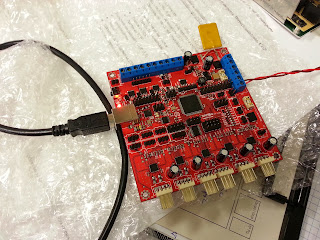Fighting with online shops too
Today I have got one bizarre experience. A few days ago I did shop some parts for a 3D printer I am building but I guess the site was overloaded (or poorly procured) and I got several errors till I got my order through. So I decided to ask the seller about my order since a few days have passed without hearing from them. This is the chat transcript. Start Time: 12/31/2013 00:06:30 End Time: 12/31/2013 00:35:14 Operators: Jayla Transcripts: Please wait for a site operator to respond... If you do not want to wait, please click here to leave us a message. Operator Jayla has joined the chat. [00:06:30] Jayla: Hi Miguel Sanchez, I hope you are doing fine. How may I help you? [00:06:38] Miguel Sanchez: HI [00:06:54] Miguel Sanchez: I'd like to know about my order. [00:07:32] Miguel Sanchez: It's been a few days and it is my first order from you. But mostly the server was giving me errors while going through the order. [00:07:45] Miguel Sanchez: 26 dic 2013 16:18:12 PST Id.








